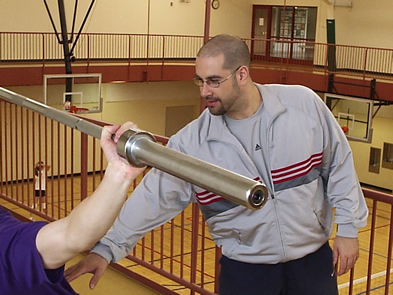Training A High School Athletes Core
By Wil Fleming
Not very long ago AR Bloomington was fortunate to get IYCA Board of Experts Member, Mike Robertson, to do an in-service for our entire team and he really knocked it out of the park.
Mike’s selected topic was “Core Training”, needless to say his presentation changed the way that we both think about and train an athlete’s core.
The IYCA training system is at the forefront of training high school athletes, so I thought that I’d share with you my takeaways from Mike’s presentation.
First off let’s try to define what the core is. Some people suggest that it is only the abdominals (and specifically talk about the rectus abdominus and external obliques), others begin to include the spinal erectors, and others go even further.
We will go with a description that includes deeper muscles (multifudus, transverse abdominus). By including these muscles we will be able to get to a better and deeper model of core training that is more applicable to high school athletes.
Athletes use their core for specific purposes, Mike termed the 2 uses for the core as the 2 R’s “Re-Distributing force and Re-Directing force”. This simple idea is on the cutting edge of performance training and shapes how we train the core.
Re-Distributing force is the idea that the core should take stress off of the lumbar spine and prevent pain. A strong core in this sense will focus on the ability to maintain and get in a neutral spine and pelvic position.
By doing this athletes will have greater core stability in their movements. When a football player has a glancing blow they will not go down as easily because their core keeps them stable; when a tennis player is in an extended 1 leg stance returning a ball they will be less likely to get injured. In this way Re-Distributing force keeps athletes healthy, and is the basic part of core training.
Re-Directing force is the next step in core training, by using core stability to re-direct force athletes swinging a baseball bat will be able to transmit power from the lower body and turn it into rotation at the shoulders.
A weak core in this sense is like a poor power line. All the power in the world can be generated at the power plant, but if it doesn’t get to your house, you don’t have any use for it.
To train each of these try the following movements with your high school athletes:
Planks….With a dowel on your back
Nearly everyone has tried the basic plank, but by making 1 simple change this becomes a tremendous exercise for training re-distributing force. Place a dowel rod along your back while in a plank and have 3 points of contact with it: the back of your head, your thoracic spine and your pelvis.
In the region of your lower back there should only be the space of your hand in between the dowel and your back. This position is the neutral spinal alignment we look for. Increasing time and decreasing stability (through removing a point of contact) are two easy ways to progress this exercise). Increasing the angle (i.e. elevating the upperbody by putting them on a bench) is a great way to regress the exercise.
MB Side Throws
Medicine balls throws are a big part of the AR Bloomington training system at the younger age and should remain so as athletes reach the 14+ group. There is no better way to train athletes to re-direct force than through the use of MB throws.
Ensure that the athletes are getting rotation through their hips, remaining stable through their lumbar spine and then again rotating in their thoracic spine. Changing the cadence (adding steps or recoiling in a rhythm) can add variation to the program and add a degree of specificity that High School Athletes really enjoy.



